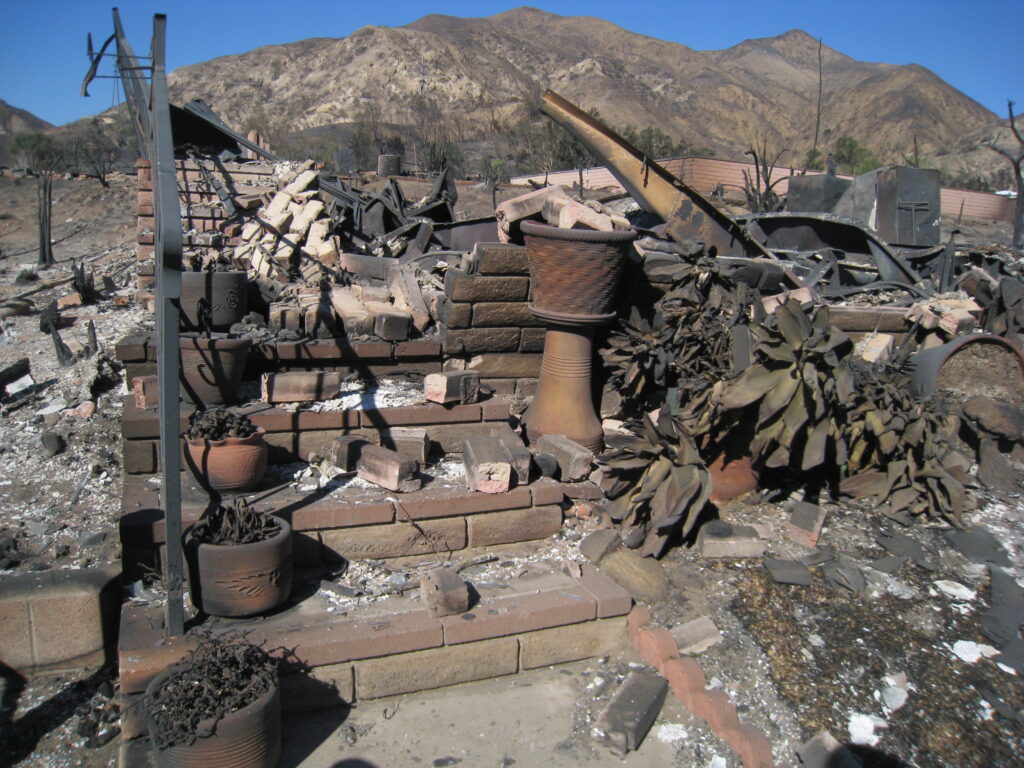Families facing the worst, and not knowing what to expect until they get there. Patricia Nazario speaks with one survivor and explains that while some homes were completely destroyed, the blaze inexplicably spared others.

The ruins of a home destroyed in the Station fire in an area known as Stonyvale in Big Tujunga Canyon in the Angeles National Forest northwest of Los Angeles, seen Tuesday morning, Sept. 1, 2009. (Photo by Patricia Nazario)

Families with the painstaking task of searching through rubble to salvage their personal belonging. (Photo by Patricia Nazario)
As the U.S. Forest Services continues escorting families back to their remote properties in the foothills of the Angeles National Forest, some residents are counting their lucky stars at the hit-or-miss nature of the Big Tujunga wildfire.
The 2009 California wildfires season amounted to about 9,160 blazes that burned some 405,500 acres of land. The Station Fire was the largest and deadliest of the season. Two firefighters died in the line of duty, and flames destroyed 120 structures. Southern California’s continued drought, high temperatures and strong Santa Ana winds are contributing factors to the extreme fire conditions.


